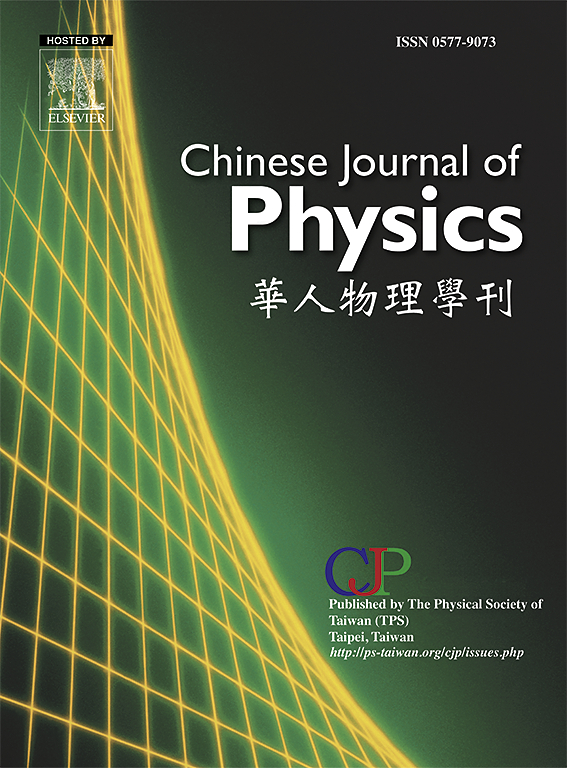Neurodynamic behavior of hippocampal CA1 neuron model driven by external current stimulation
IF 4.6
2区 物理与天体物理
Q1 PHYSICS, MULTIDISCIPLINARY
引用次数: 0
Abstract
Electromagnetic intervention has significant superiorities in improving the brain cognitive functions. The hippocampal CA1 neuron is associated with cognitive functions such as working memory and spatial navigation. However, it is difficult to capture the neurodynamic behavior of biological neurons due to the disadvantages of biological electrophysiological signals. Neuron model can simulate the electrophysiological characteristics of biological neuron, and produce its neurodynamic behavior. In addition, the hippocampal CA1 neuron model did not consider the electromagnetic induction caused by ions flow inside and outside the cell membrane of biological neurons. Thus, introducing magnetic flux-controlled memristor, we construct a hippocampal CA1 neuron model that considers electromagnetic induction. Then, we investigate its neurodynamic behavior driven by external current stimulation using neurodynamic methods, including the interspike interval bifurcation, the largest Lyapunov exponent, the time sequence of membrane potential, and the phase diagram. Our results find that when the CA1 neuron model is initially in any of the resting state, spiking state, and cluster-firing state, the model’s firing is promoted as the amplitude of external current stimulation increases, while the model’s firing is inhibited as the frequency of external current stimulation increases. Additionally, as the amplitude increases, the model exhibits different firing modes, tending to chaotic firing from the three initial states; as the frequency increases, the model exhibits different firing modes, tending to spiking or cluster-firing from the three initial states. This work can enhance the understanding of the regulatory mechanism of external current stimulation on the hippocampus.
外电刺激下海马CA1神经元模型的神经动力学行为
电磁干预在改善大脑认知功能方面具有显著优势。海马CA1神经元与认知功能有关,如工作记忆和空间导航。然而,由于生物电生理信号的缺点,很难捕捉到生物神经元的神经动力学行为。神经元模型可以模拟生物神经元的电生理特性,产生其神经动力学行为。此外,海马CA1神经元模型未考虑生物神经元细胞膜内外离子流动引起的电磁感应。因此,我们引入磁控忆阻器,构建了考虑电磁感应的海马CA1神经元模型。在此基础上,利用神经动力学方法研究了外电刺激下神经元的神经动力学行为,包括脉冲间隔分岔、最大Lyapunov指数、膜电位时间序列和相图。我们的研究结果发现,CA1神经元模型在初始处于静息状态、尖峰状态和簇状放电状态时,随着外界电流刺激幅度的增加,模型的放电增强,而随着外界电流刺激频率的增加,模型的放电受到抑制。此外,随着振幅的增加,模型呈现出不同的发射模式,从三种初始状态开始趋于混沌发射;随着频率的增加,模型呈现出不同的发射模式,从三种初始状态趋向于峰状或簇状发射。本研究有助于加深对外界电流刺激对海马调节机制的认识。
本文章由计算机程序翻译,如有差异,请以英文原文为准。
求助全文
约1分钟内获得全文
求助全文
来源期刊

Chinese Journal of Physics
物理-物理:综合
CiteScore
8.50
自引率
10.00%
发文量
361
审稿时长
44 days
期刊介绍:
The Chinese Journal of Physics publishes important advances in various branches in physics, including statistical and biophysical physics, condensed matter physics, atomic/molecular physics, optics, particle physics and nuclear physics.
The editors welcome manuscripts on:
-General Physics: Statistical and Quantum Mechanics, etc.-
Gravitation and Astrophysics-
Elementary Particles and Fields-
Nuclear Physics-
Atomic, Molecular, and Optical Physics-
Quantum Information and Quantum Computation-
Fluid Dynamics, Nonlinear Dynamics, Chaos, and Complex Networks-
Plasma and Beam Physics-
Condensed Matter: Structure, etc.-
Condensed Matter: Electronic Properties, etc.-
Polymer, Soft Matter, Biological, and Interdisciplinary Physics.
CJP publishes regular research papers, feature articles and review papers.
 求助内容:
求助内容: 应助结果提醒方式:
应助结果提醒方式:


